If you want to increase productivity and efficiency within your organization, you need the right knowledge management tools.
But with so many tools to choose from, how do you know what the right ones are?
Today, we’re going to take a deep dive into one of the most popular knowledge management softwares on the market—Google Drive.
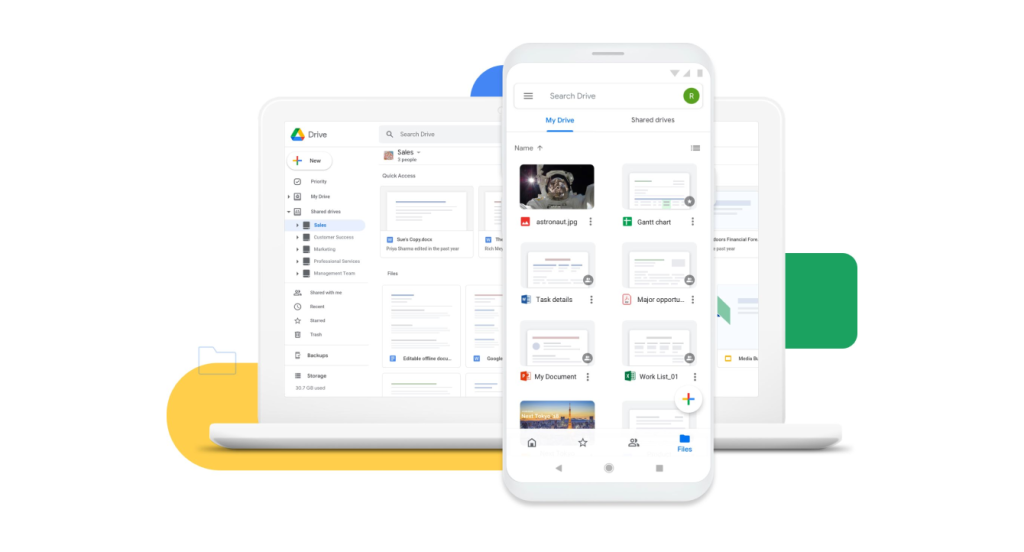
Let’s take a look at all things Google Drive: what it is, the pros and cons from a knowledge management perspective, and how to maximize Google Drive to empower better knowledge management and sharing within your organization.
What Is Knowledge Management?
First things first. Before we jump into the pros and cons of Google Drive as a knowledge management software, let’s quickly touch on what, exactly, knowledge management is.
Knowledge management refers to systems, processes, or methods that help organizations (and individuals within those organizations) better organize, manage, and share information. As such, knowledge management tools (also sometimes called knowledge sharing tools) help facilitate knowledge management—whether that’s by offering better ways to organize information or more efficient strategies for sharing knowledge with employees.
Knowledge Management Methods
There are two main methods of knowledge management—the push method and the pull method.
The push method is about proactively pushing knowledge out across the organization. With the push method, employees or individual contributors (ICs) don’t have to request information; instead, it’s sent to them directly when necessary.
With the pull method, knowledge is only shared when requested. If an employee or IC needs to access a specific piece of information (for example, a customer file), they’ll need to proactively search for that information themselves.
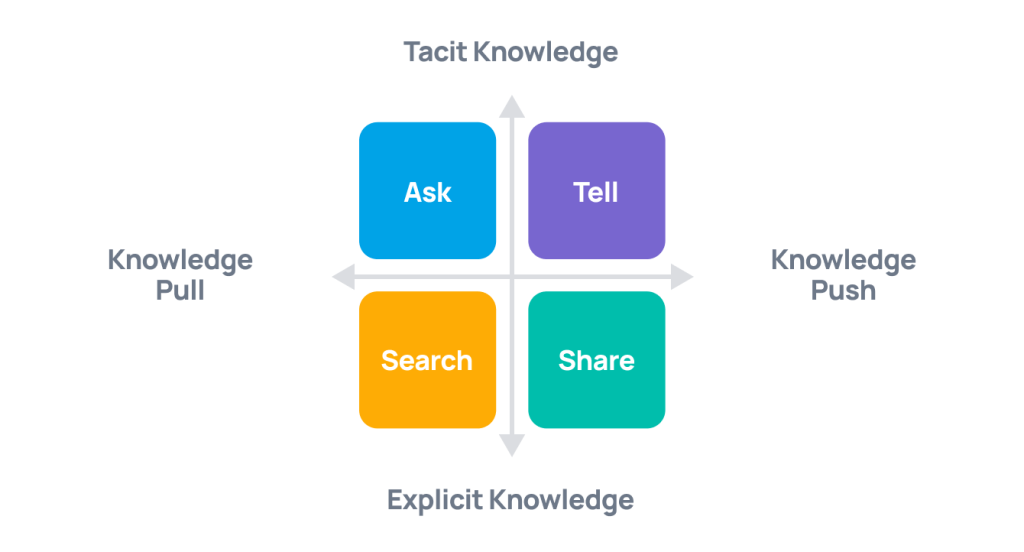
Generally, different knowledge management methods are used for different types of knowledge sharing. A company might use the push method for sharing key information that impacts the entire organization (for example, news of a new product launch), but may rely on the pull method for more specific types of knowledge that only certain employees want or need access to (for example, training videos for a new department-specific software).
What is Google Drive?
Now that you understand what knowledge management is (and the different methods within the knowledge management space), let’s jump into the tool we’re here to discuss: Google Drive.
Google Drive is a cloud storage and file sharing platform that allows both organizations and individuals to more easily store, organize, and share information.
From a knowledge management standpoint, Google Drive has some major advantages. Some of the biggest pros for Google Drive include:
- Integration with Google Suite. Arguably the biggest benefit of Google Drive is its seamless integration with Google Suite—including Google Docs, Google Sheets, and Google Slides. Thanks to the integration, employees can easily access and collaborate on projects in real-time—which can increase productivity and efficiency across the board.
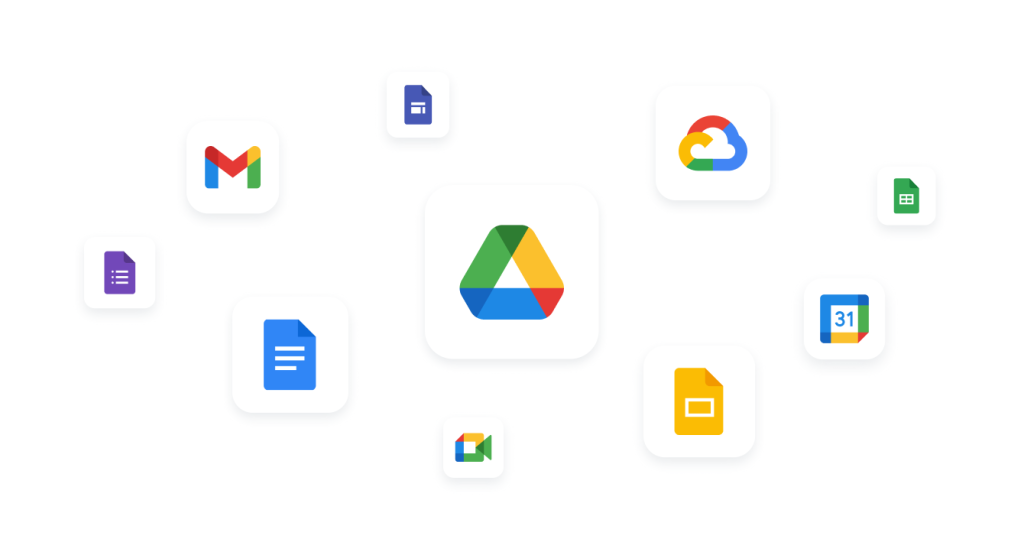
- Industry-leading file storage capabilities. With the ability to edit and store 100+ file types (including images, CAD files, and PDFs), Google Drive offers some of the best file storage capabilities in the industry—which is particularly important for organizations that work on a wide variety of projects/file types.
- Cloud-based. Because Google Drive is cloud-based, it eliminates the need for local files—which is particularly important for hybrid and remote teams.
But while Google Drive has some clear benefits, when it comes to knowledge management and knowledge sharing, there are also some drawbacks. Some of the challenges with Google Drive include:
- Cumbersome link structure. Google Drive’s links are long and virtually impossible to remember (Google Drive links are a random combination of letters and numbers, with file links clocking in at 80 characters and folders at 76 characters). So if an employee needs to access a file or folder, they have to spend time tracking down the corresponding link in their email, Slack channel, or project management software—which hinders productivity.

- Can be challenging to find the information you’re looking for. An organization’s Google Drive can have thousands of files and folders and manually searching through all of those files and folders to find what they’re looking for can be tedious, time-consuming, and frustrating for employees.
Bottom line? Google Drive has the potential to be one of the best internal knowledge management software; it just needs an additional tool to help bridge the gap and provide the functionality it’s missing.
And that’s where GoLinks comes in.
What is GoLinks—and how does GoLinks maximize Google Drive?
GoLinks is a knowledge management tool that creates short, intuitive, easy-to-remember links designed to empower easier, better, and more efficient internal knowledge sharing between employees. Essentially, GoLinks takes long, hard-to-remember URLs—and transforms them into simple words and phrases that employees can use to access the information they need, when they need it.
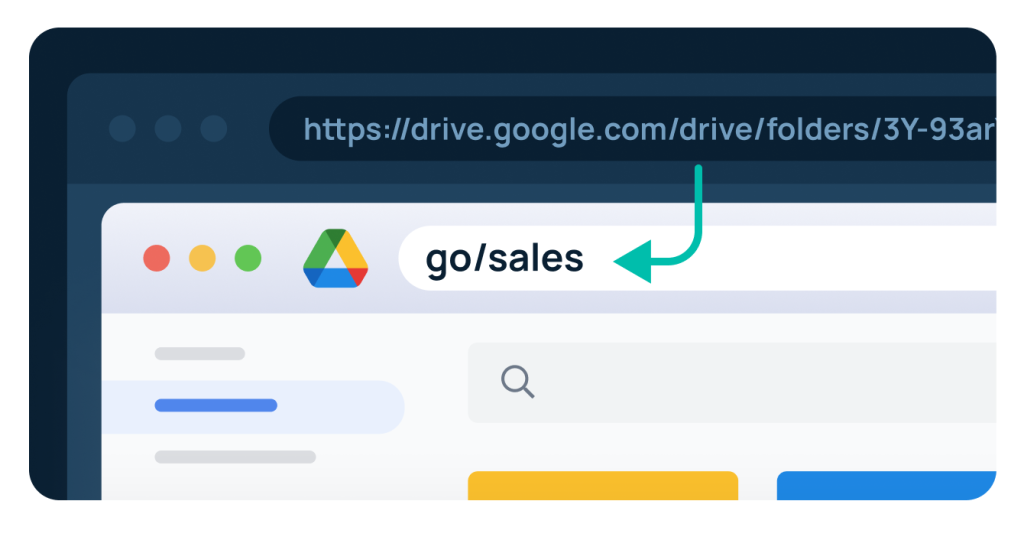
With a GoLinks/Google Drive integration, organizations are able to enjoy all of the benefits Google Drive has to offer, while eliminating the knowledge management challenges.
Some of the main ways GoLinks maximizes Google Drive’s functionality include:
- No more long URLs. GoLinks takes Google Drive’s long, impossible-to-remember links and turns them into short, easy-to-remember URLs (like go/drive, go/sales, or go/marketing-materials).
- Easier for employees to remember, locate, and access information. Because GoLinks are short and memorable, employees don’t have to waste time searching multiple platforms and emails to find the link they need. Instead, they can just type in the appropriate GoLink from their memory and instantly find what they’re looking for.
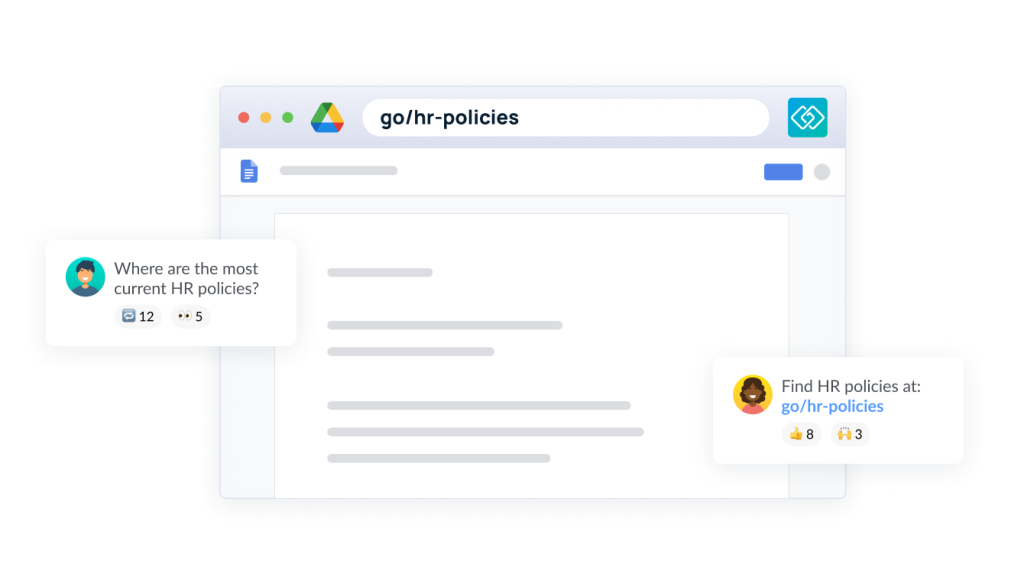
- Easier for employees to share knowledge and information with their colleagues. Because go links are so short, it’s easy for employees to share with their employees where they can find what they’re looking for. (For example, if employee A asks, “Where are the most current HR policies located?,” employee B can respond, “You can find that at go/HRpolicies”—instead of spending time and energy searching for the appropriate link to send to their co-worker.)
- Instant, secure access. With GoLinks, employees can instantly access the documents, templates, resources, and knowledge they need. And because go links are redirects, they maintain the same security and share access as original Google Drive links, which means companies don’t need to worry about links being shared outside of the organization or unauthorized people being able to access sensitive information.
Want to learn more about how GoLinks can maximize Google Drive’s capabilities—and enable more effective knowledge management and sharing within your organization? Then make sure to check out how financial services IMO platform Signal Advisors used both tools to better onboard their remote workforce.
Use GoLinks to get the most out of Google Drive
Google Drive is a great system for organizing, managing, and sharing information, but it also lacks some of the features and functionality that are necessary for the most effective knowledge management and sharing. The GoLinks integration can bridge that gap.
Ready to get the most out of Google Drive? Try GoLinks for free today—and unlock the features and functionality you need to take your knowledge management and sharing to the next level.
Access and share resources instantly with GoLinks
Try for free














